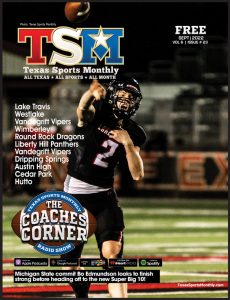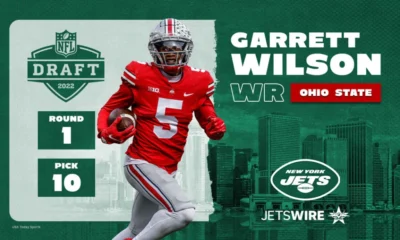If you love football, you will love fantasy football. This is your opportunity to be an NFL team general manager/coach, adding an extra layer of fandom to regular professional football watching. The best way to get started is to join a league. You can play in a league with your buddies, or join by yourself. The most popular leagues are sponsored by Yahoo and ESPN. I prefer the latter. Both use a head-to-head scoring format, in a 13-week regular season and 3- or 4-week playoff bracket system. League drafts are starting now.
Drafting your team is the first step, and participating in a live draft is exhilarating. However, you don’t need to participate in the draft. Last year, I had a schedule conflict and couldn’t attend my draft, so my team was selected by ESPN, via auto pick. If you don’t know anything about the game, auto pick is a good way to start. After you assemble a team, you’ll rely on what your players do in actual games every week to generate fantasy points. The team with the most fantasy points each week wins his/her head-to-head match.
At its core, fantasy football is a math-based game based on the real-life production of players. Each week, you fill out a roster by “starting” players at the various positions allowed based on your league settings. These usually include one quarterback (QB), two running backs (RB), two wide receivers (WR), one tight end (TE), one kicker (K), one defense (D/ST) and one FLEX (usually RB or WR). There are a total of nine in your starting lineup, but you also have seven players on your bench. Bench player stats don’t count.
The statistics your starting players accumulate on the field (yards, touchdowns, etc.) contribute to their point total for the week. The point totals of all of the players in your starting lineup are tallied, and if you have a higher total than your opponent (another member of your league) you win that week. You set your lineup based on your perception of who will play best on a given week. There are standard leagues and PPR (point-per-reception) leagues, where tight ends and running backs receive a point for each reception.
Each week will proceed like this until the end of the fantasy regular season (Week 13). At this point, the teams with the best win-loss records will enter the fantasy playoffs, for win-or-go-home head-to-head matchups. Depending on the number of teams in your league, the playoffs can last three, or four weeks. Whoever wins all of his/her games in the playoffs is the league champion. Last year, I was playing in a 10-team ESPN league, and six made the playoffs. Two teams got a bye in the first week of the playoffs.
Winning is simple (not easy). You choose the best players, through the draft and waiver wire, work around injuries and decide the right players to start each week. Remember, you have 16 players on your team but only nine in your starting lineup. The points scored by the others on the bench don’t count. That’s why it’s so important to choose the right starters. Look at matchups, which are critical. You can spend a little, or a lot of time looking at the stats to determine who to start each week. It can become a second job if you let it.
One mistake you must avoid in the draft is wasting a draft pick on a quarterback in the early rounds. There is large supply of good quarterbacks. If you’re in a 10-team league, there will be ten starting quarterbacks selected, but there are a total of 32 NFL quarterbacks, and most of them are good enough to draft. Aaron Rodgers and Tom Brady might get drafted as early as the fourth round. But you will probably be able to get Alex Smith in the 12th round. Smith averaged 18.3 fantasy points last year – the same as Brady.
The most important players to draft in the early rounds are running backs and wide receivers. In my opinion, you will want to select a workhorse running back in the first round. This is a guy who will get a lot of carries each week. If you’re in a PPR league, you want a running back who also catches a lot of passes. Some leagues award a point for each reception, and some just a half-point. This makes a big difference. There is a short supply of really good running backs, so don’t hesitate to load up on running backs early on.
Wide receivers are harder to predict. Antonio Brown is in a league by himself, and you can draft him in the first round with a high level of confidence. He won’t be available in the second round. DeAndre Hopkins, Julio Jones and Odell Beckham are in the second tier. Then you have Michael Thomas, Devante Adams, Keenan Allen and A.J. Green in the third tier. I would predict that all seven of the second- and third-tier wide receivers will be gone in the second round. But I’d still rather have two top running backs on my team.
The middle rounds are also important, and this is where no one seems to agree on the talent. By the time you get to the third round, you’ll see pundits with a variety of opinions on the talent of these players. My advice is to read about the different players and make your own decision based on what sounds right. I will enter this year’s draft with an idea of who I will draft, and who I won’t draft. Then, I’ll let the players come to me, based on my draft order and what other players decide to do. This is not entirely predictable.
The late rounds (12-16) are the rounds where you will want to pick up your quarterback, defense and kicker. You may even select your tight end in one of the late rounds, but you would also be justified to spend a third-round pick to select Rob Gronkowski, the Patriots’ tight end. Gronk is in a class by himself, and he is Brady’s favorite receiver. If I can draft Gronk in the third round, I will do so. However, if someone else gets him first, I will wait. The No. 2 tight end if Travis Kelce, and he is projected to go late in the third round.
After the draft, you take off your general manager hat and put on your head coach hat. Who will you start in week 1? You’ll probably be going with the guys you drafted in the earlier rounds until they prove to be inferior to other players acquired later. But you also need to look at opponent strength and matchups, as I stated earlier. Dig into the statistics because this is the key to your success. You’re going to have injuries throughout the season, and you will also have bye weeks. You need to bench all players during their bye weeks.
I don’t want to minimize the importance of the draft, but you will not win or lose a fantasy championship with a draft. Last season, my No. 1 pick overall in the draft was David Johnson, and he was injured in the first quarter and lost for the season. Andrew Luck, my drafted quarterback, never played a game in 2017. I still managed to win the championship because I worked the waiver wire. I found Saints running back Alvin Kamara on the waiver wire in week three but dropped him. Later, I had to trade to get him, but it was worth it.
You won’t know how good, or bad, your fantasy team is after the draft. They may look good on paper, but the guys you think are studs could be duds. You could also have a rash of injuries. The good news is that there are always undiscovered stars waiting to be acquired on the waiver wire. You must be looking for that talent. Fantasy football is like life – you get out of it what you put into it. The harder you work at it, the luckier you will get in winning games and ultimately the coveted league championship. Have fun, and Godspeed.
Read Thomas L. Seltzer’s blog daily at www.doubtingthomassports.com.

 The Texas Sports Monthly PODCAST
The Texas Sports Monthly PODCAST
- 2019 Season - Week 12Area Round of the 2019 Central Texas High School Playoffs as the tournaments continue. Lake Travis has a rematch against San Antonio Madison at Rattlers Stadium in San Marcos. Westlake would go on the Win the State Championship while Cavs would defeat Judson again in 3rd round at the Alamodome but would fall the following […]
- 2019 Season - Week 11Steve and Russell breakdown the 2019 High School Playoffs in Central Texas on 104.9 Horn FM. Bi-District week where districts collide in this first round. McCallum and Westwood battled out....Giddings defeated Houston Kashmir 50-0. Georgetown at LBJ, Lake Travis at Smithson Valley, Vandegrift hosts Bridgeland at home led by Jax Mccauley in a close comeback […]
- 2019 Season - Week 10Russell & Steve cover week 11 on our 10th show as teams get near the playoffs and districts begin to line up as teams edge each other out for the final playoff spots. Russell became a grandpa the night before this show. . . Vista Ridge beat Round Rock 41-38.
- 2019 Season - Week 9Week 9 of The Friday Night Countdown on 104.9 Horn FM is your Pre-Game for Central Texas High School Football for 2019 Season! Thursday Night games we rained out and delayed. Weiss winning 14-7 over Eastview.
 Texas Sports
Texas Sports
- UT Athletics announces 2023 Spring Commencement participantsA total of 111 current and former UT student-athletes are scheduled to participate in commencement exercises this weekend or are projected spring or summer 2023 graduates.
- The Longhorn Foundation launches the United Texas CircleThe United Texas Circle is a philanthropic giving society designed to support Texas Athletics across their greatest areas of need.
FALL 2022 PREVIEW COMING SOON










